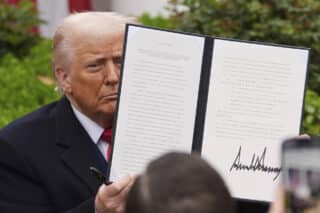When a barber or masseur expertly takes your head to give it a stress-relieving twist, the audible crack of the neck should remind us of that split-second when the garrote broke the necks of Fathers Gomez, Burgos and Zamora at a public execution in Bagumbayan in February 1872. Contrary to popular belief, the garrote did not kill slowly by strangulation; rather, the bolt was positioned tightly on the neck such that one or two quick twists of the handle by the executioner would dispatch the victim swiftly and, in principle, painlessly. Fear of the garrote was deemed a deterrent to crime and subversion.
So significant was this event that O.D. Corpuz aptly described it as “The Terror of 1872” that was followed by a series of arrests, torture, imprisonment, exile, and executions that silenced a whole generation but planted the seeds of revolution in the next. “There is no Philippine history before 1872,” declared the nationalist historian Teodoro A. Agoncillo in the 1960s. And if we look further back, our National Hero himself wrote: “If not for 1872 Rizal would have been a Jesuit and he would not have written the ‘Noli Me Tangere.’” He later dedicated “El Filibusterismo,” his second novel, to Gomburza.
Of 1872, Corpuz made one very important observation: Many of our 19th-century heroes were children at the time. Rizal was 11 years old; Andres Bonifacio 9, Apolinario Mabini 8, Antonio Luna 6, and Emilio Aguinaldo 3. Corpuz added, with a chuckle, that in 1872 both Emilio Jacinto and Gregorio H. del Pilar were not yet born. These two leading generals—the first was involved in the Philippine Revolution against Spain, the second made his name during the Philippine-American War—are timely in December: Jacinto was born on Dec. 15, 1875, while Del Pilar met his end in Tirad Pass on Dec. 2, 1899, delaying the enemy in hot pursuit of Aguinaldo who was traveling north to Palanan, Isabela.
It’s a pity that Jacinto and Del Pilar are mere footnotes in textbook history. The Philippines is a young nation, populated by young people that should be inspired by Jacinto and Del Pilar who both made their mark in history before turning 25. Based on extant photographs, Del Pilar had the edge because of his movie-star looks and the trail of broken hearts in his wake. Teodoro M. Kalaw tries hard not to gush in his biography describing Del Pilar: “He had agreeable and genial features. He was above the average in height, with clear pinkish brown skin, with somewhat brown eyes, straight nose, thin lips, slender body—he may be considered a handsome fellow to all intents and purposes.”
When the enemy stripped Del Pilar’s corpse of his weapons and uniform, they took everything as souvenirs, leaving him by the wayside in his underwear. From the pockets of his blood-stained uniform were fished out: a $20 gold coin, perfumed letters, a locket with a lock of hair, and a handkerchief embroidered with the name of a woman who has since been mistaken for his sweetheart. Such is the short life worthy of a movie by Jerrold Tarog who gave us the phenomenal box-office hit “Heneral Luna.”
Jacinto’s life has been written up by Epifanio de los Santos and Del Pilar’s by T.M. Kalaw. Both biographies are standard but they were written early in the last century. Surely a young historian using more materials can give us an update. Jacinto’s notebooks written in fading pencil are still extant and in a private collection; there must be something there worth writing about.
There is unpublished correspondence between Trinidad H. Pardo de Tavera and Del Pilar that has to be brought to light to provide new insights. In the “Philippine Insurgent Records,” returned to the Philippines by the United States and now housed in the National Library, are many unknown documents on Del Pilar waiting to be used, including a notebook of his love letters to a certain “Poleng,” on the cover of which the US military historian J.R.M. Taylor wrote: “No interest here.”
A missing diary of Del Pilar has to be found, where on the day of his death he wrote: “I have a terrible premonition that the enemy will vanquish me and my valiant men, but I die happy fighting for my beloved country.”
Comments are welcome at aocampo@ateneo.edu


